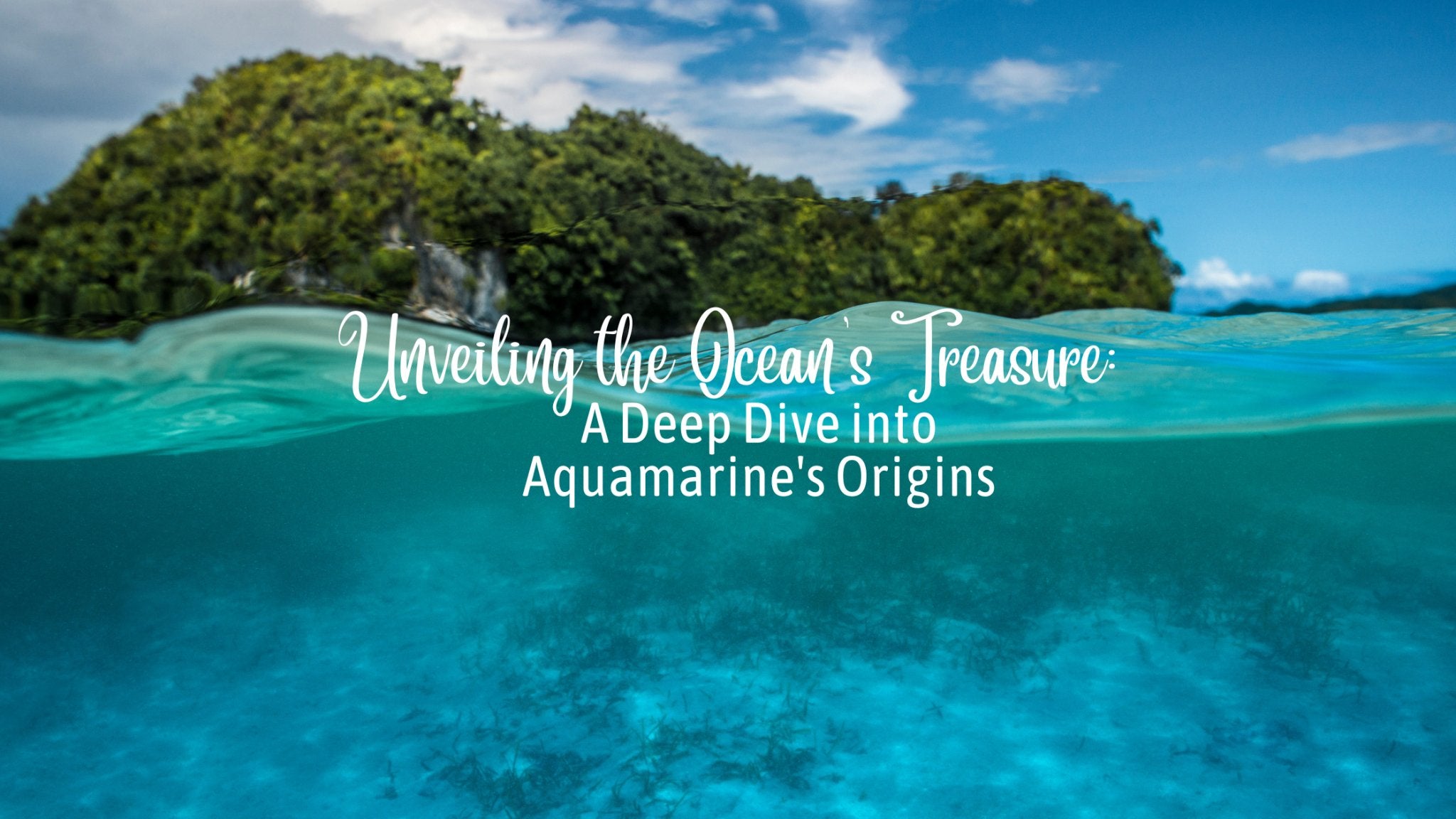Aquamarine, with its mesmerizing blue hues reminiscent of the tranquil ocean, has long been hailed as a gemstone of beauty and serenity. To truly appreciate its allure, let's take a deep dive into the geological aspects of aquamarine, exploring its formation and primary sources around the world.
Formation of Aquamarine: Nature's Alchemy
Aquamarine belongs to the beryl family of minerals, which also includes emerald. Its characteristic blue color is derived from the presence of iron impurities during its formation process. The gem crystallizes in large hexagonal prisms, and the intensity of its blue tones can vary depending on factors such as the concentration of iron and the specific geological conditions during its creation.
The formation of aquamarine is intrinsically linked to pegmatite deposits, which are coarse-grained, granite-like rocks. These pegmatites often contain large crystals due to the slow cooling process of the magma from which they originate. Aquamarine crystals, forming in pockets within these pegmatites, can achieve impressive sizes, adding to the allure of this precious gem.
Primary Sources of Aquamarine: From the Americas to Asia
Aquamarine is found in various locations around the globe, each contributing to the gem's unique characteristics.
-
Brazil: Renowned for producing some of the world's largest and most vibrant aquamarine crystals, Brazil has long been a major source of this gemstone. The Santa Maria Aquamarine, named after a Brazilian locality, is particularly famous for its deep blue color and exceptional clarity.
-
Madagascar: This island nation off the southeastern coast of Africa is celebrated for its aquamarine deposits, with stones often displaying a delightful greenish-blue hue. Madagascar's aquamarines are highly sought after for their appealing color variations.
-
Pakistan and Afghanistan: The mountainous regions of Pakistan and Afghanistan are rich in aquamarine deposits, and some of the finest specimens with intense blue coloration have been unearthed from these areas. The famed Shigar Valley in Pakistan is renowned for producing high-quality aquamarine.
-
Mozambique: In recent years, Mozambique has emerged as a significant source of aquamarine. The gemstones from this region are known for their clarity and are often found in association with other beryl varieties.
-
Colorado, USA: The United States, particularly the state of Colorado, has been a notable source of aquamarine. The Mount Antero region in Colorado is recognized for producing gem-quality aquamarine crystals in a variety of sizes.
Preserving the Ocean's Essence: A Gem of Enduring Beauty
As we unveil the geological tapestry behind aquamarine, it becomes evident that this gem is not merely a beautiful adornment but a testament to the Earth's intricate processes. From the fiery depths of ancient magma to the serene coolness of oceanic hues, aquamarine's journey is as captivating as the gem itself.
Whether you admire the gems from the Brazilian mines, the rugged landscapes of Pakistan, or the island charm of Madagascar, each aquamarine tells a story of its unique geological birthplace. So, the next time you gaze into the tranquil blues of an aquamarine, envision the deep connection it holds with the oceans of the Earth—a true treasure from the heart of nature.


Leave a comment